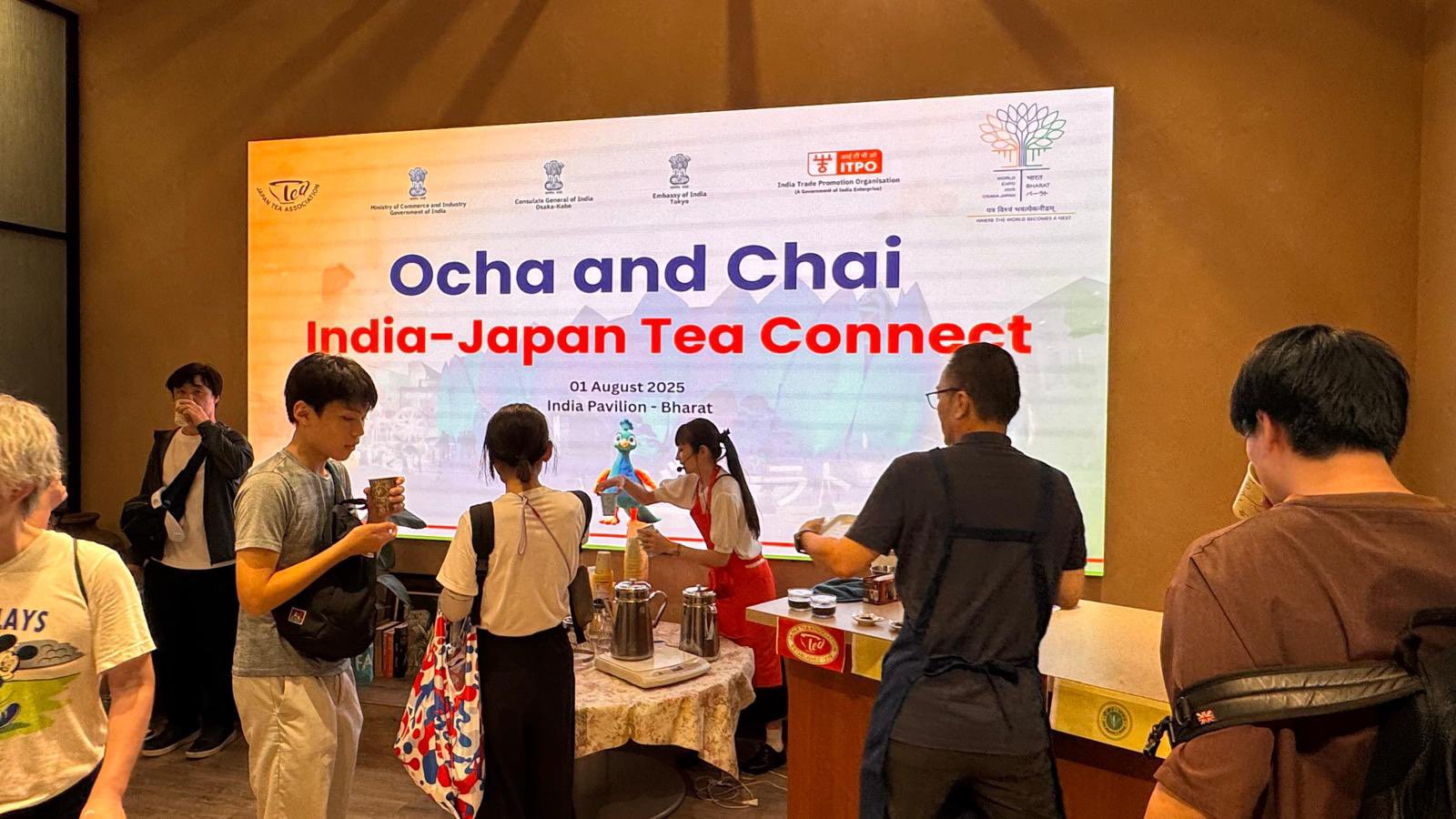With Trade, Tech, and Trust at the Forefront, Here's How India and Japan Will Reset the Terms of Indo-Pacific Engagement
Indian Prime Minister Narendra Modi is visiting Tokyo on August 29 at the invitation of Japanese Prime Minister Shigeru Ishiba for the 15th Annual India–Japan Summit.
The visit shows the growing strategic depth between the two Indo-Pacific democracies, as both nations aim to expand economic cooperation, enhance regional security frameworks, and advance shared technological goals.
 |
| Representational Image Source: MEA/FM |
These include ancient Buddhist connections and Japan’s continued respect for Indian jurist Radhabinod Pal, who delivered the lone dissenting judgment at the Tokyo War Crimes Tribunal.
The bilateral relationship, once described as understated, has undergone a major transformation over the past two decades, evolving from a “Global Partnership” in 2000 to a “Special Strategic and Global Partnership” since 2014. This unique designation reflects the increasing convergence of political, economic, and security interests between New Delhi and Tokyo.
The two countries collaborate closely in multiple regional and global frameworks including the Quad grouping alongside the United States and Australia, and the Supply Chain Resilience Initiative. Japan supports India’s Indo-Pacific Oceans Initiative and India is an active contributor to Japan’s Free and Open Indo-Pacific strategy.
Shared positions on the rule of law, maritime security, and regional connectivity have reinforced these alignments. Japan is also a key partner in India-led global initiatives such as the International Solar Alliance, the Coalition for Disaster Resilient Infrastructure, and the Leadership Group for Industry Transition (LeadIT).
Tokyo remains New Delhi’s largest source of bilateral Official Development Assistance, with cumulative ODA disbursements exceeding JPY 580 billion in fiscal year 2023–24.
This includes long-term infrastructure projects such as the Mumbai–Ahmedabad High-Speed Rail, which uses Japanese Shinkansen technology and is jointly implemented by Indian and Japanese agencies. The economic partnership is now transitioning from aid to co-investment and technology collaboration.
Japan is emerging as a key player in India’s semiconductor development ecosystem under the India–Japan Digital Partnership, with plans to expand talent exchange and facilitate technology transfer in chip fabrication and design.
◤Today’s NATIONAL DAY -08.15-◢
— Expo2025 大阪・関西万博 (@expo2025_japan) August 15, 2025
今日の #大阪・関西万博 をご紹介📸✨
🌎ナショナルデー ~ #インド ~
インドの魅力をたっぷり味わえるイベントとなりました🇮🇳#EXPO2025 #きたぞ万博 #HelloEXPO2025#ナショナルデー #NATIONALDAY pic.twitter.com/d269J2n8Mk
In the clean energy sector, the India–Japan Clean Energy Partnership, launched in 2022, is supporting projects in hydrogen fuel development, battery storage, and energy efficiency.
Japan is also investing in skill-building, aiming to train and place 50,000 Indian professionals in Japan by 2030 under the Technical Intern Training Program (TITP) and Specified Skilled Worker (SSW) framework.
India Japan Bond Beyond Diplomacy!
— MyGovIndia (@mygovindia) August 26, 2025
While addressing the launch of green mobility initiatives at Suzuki’s Hansalpur plant, PM @narendramodi shared that India Japan’s ties go far beyond diplomacy rooted in culture and trust.
From Maruti Suzuki to bullet trains, this partnership… pic.twitter.com/SHzd89uTTV
Bilateral trade touched approximately USD 25.2 billion in FY 2024–25. India’s exports, valued at USD 6.25 billion, include chemicals, auto components, and seafood.
Imports from Japan, totaling USD 18.9 billion, are primarily centered on machinery, electronics, and ferrous metals.
The India–Japan Comprehensive Economic Partnership Agreement (CEPA), in effect since 2011, is currently under review to address market access issues and unlock untapped potential.
There is growing support for Japan’s backing of a broader India–EU Free Trade Agreement, as discussed in Modi’s recent phone call with Finnish President Alexander Stubb.
Japan is also participating actively in India’s state-level outreach programs.
In 2025 alone, five Japanese prefectures signed MoUs with various Indian states for investment and business collaboration. On the defense front, joint military exercises including MALABAR, JIMEX, and Dharma Guardian have enhanced interoperability.
A landmark agreement on the transfer of defense equipment and technology, signed in 2015, has facilitated cooperation in naval radar systems and surveillance capabilities.
Japan’s role in India’s Indo-Pacific maritime awareness operations is also expanding through multilateral coordination.
In science and innovation, 2025–26 has been designated the Year of India–Japan Science, Technology, and Innovation Exchanges. There are over 665 institutional partnerships between Indian and Japanese universities.
An estimated 54,000 Indians now live in Japan, with Tokyo’s Edogawa ward hosting a growing professional Indian community. The Bharat Pavilion at Expo 2025 Osaka is among the top five most visited installations, reinforcing India’s soft power outreach in Japan.
The summit takes place at a time of considerable geopolitical flux. Trade negotiations between Japan and the United States have hit a roadblock, with Japan urging Washington to amend its tariff orders on automobiles and clarify terms of a previously announced USD 550 billion investment framework. Meanwhile, Indian–American relations are under strain.
New Delhi has reportedly declined multiple calls from U.S. President Donald Trump amid tensions over Washington’s decision to impose 50 percent tariffs on Indian exports.
Trump has accused India of indirectly supporting Russia’s war in Ukraine via discounted crude oil purchases, a claim India firmly denies.
In response, Prime Minister Modi pledged domestic resilience and protection for small businesses, farmers, and rural producers under India’s Atmanirbhar Bharat initiative.
ɎØ₲₳ ₣ØⱤ Ø₦Ɇ Ɇ₳Ɽ₮Ⱨ, Ø₦Ɇ ⱧɆ₳Ⱡ₮Ⱨ
— India In Osaka-Kobe (@IndianConsOsaka) June 28, 2025
Another inspiring yoga session celebrating International Day of Yoga 2025. This time at the stunning Heijo Palace Historical Park, World heritage site in Nara. The event was jointly organized by the Consulate General and the Nara… pic.twitter.com/VxjCqbXWrZ
Despite the growing U.S.–India friction, Tokyo and New Delhi appear determined to reinforce their bilateral partnership through quiet diplomacy and consistent engagement.
Analysts say the India–Japan relationship is emerging as a stabilizing pillar in the Indo-Pacific, built on mutual trust, aligned democratic values, and pragmatic cooperation.
Modi’s visit to Tokyo, followed by his trip to China for the Shanghai Cooperation Organisation Summit, marks a critical phase in India’s evolving global engagement strategy.
